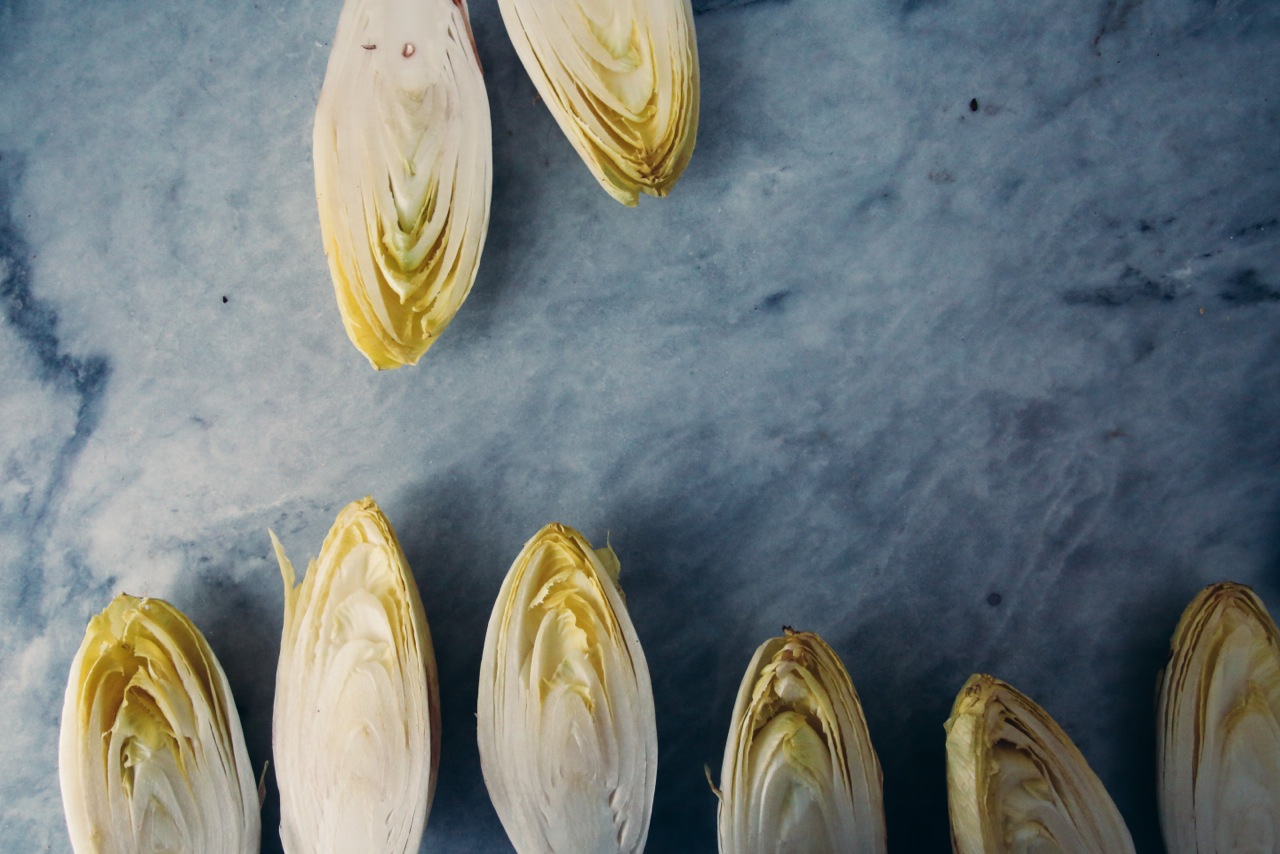The Beginning of the End(ive)
FIRST PUBLISHED HERE ON DIRT.
“Frito Lay might claim their potato chips are natural,” Rich Collins tells me. "But I’ll tell you that my endives are not. Then again, the word ‘natural’ in the food world has been bastardized beyond belief.”
What Rich means, is that you can’t find an endive in nature, not like you could another vegetable. The endive as a plant doesn’t technically exist. It’s merely an offshoot of the chicory plant, grown accidentally and discovered serendipitously in the basement of a Belgian farmhouse in the 1830s. Today endives are grown carefully and deliberately, with newfangled technology allowing endives to be ‘farmed’ indoors in climate controlled dark rooms. It’s no easy feat, and the only thing more difficult than growing an endive is marketing it. Rich should know; he’s the only one in America who’s managed to do both.
"Then again, the word ‘natural’ in the food world has been bastardized beyond belief.”
Once harvested, the endive behaves like any other vegetable, with a flavor profile lending it to a plethora of culinary applications. Eaten raw, it’s crisp, sharp and bittersweet. Its tanginess provides a reliable offset to sweeter, creamier co-stars. But when cooked, its bite mellows. You can steam it, braise it, roast it, caramelize it or toss it into a salad. Its convex torpedo leaves even peel away to form their own bite sized edible spoon; perfect for filling and serving at all those fancy canapé parties you’re not having. The endive might have 99 problems, but versatility isn’t one.
Yet we’re hardly eating the stuff; with U.S consumption hovering at just one ounce per person per year compared to eight to 15 pounds in Europe. Rich pins the discrepancy to a lack of awareness, insisting his number one competitor is ignorance. “That’s what we have to combat,” he explains. “It’s not imported produce. It’s not competitors. It’s a lack of understanding about the endive.”
There’s confusion from everything to how they’re pronounced (on-deev) to why they’re so expensive (a labor intensive growing process fraught with complications). It’s a vegetable with an identity crisis—perpetually confused with the more phonetically logical curly en-dive—enjoyed sporadically by a nation who scarcely entertains it beyond a blue cheese salad at The Cheesecake Factory. (Rich’s niece once corrected her waiter there on its pronunciation, he tells me. They didn’t believe her.)
“Ignorance is only curable with information,’ Rich explains. “But how do you do that?”
Since starting California Endive Farm in the early 1980s, he’s taken it upon himself to homeschool America about the vegetable Belgians call ‘white gold’. Prior to the dawn of the internet, his one-man attempt to educate a nation involved cold calling chefs, doling out brochures, and waxing lyrical about his beloved to anyone who would listen.
Does he think he had a part in the steadily increased demand? A little. “In a way it was the perfect time to start it all,” says Rich, referencing the burgeoning Californian food scene in the 70s and 80s. ‘The hippie movement spilled over [from the 1970s] and there was a growing interest in eating that little bit better. People started to travel more, they studied abroad, you had great places like Chez Panisse on the rise, there were chefs trying new cuisines and an interest in new produce. The Sacramento area was a great place to be, I couldn’t have pulled this off in somewhere like Kansas, at least not then.”
“Even since we started there’s been such an increased interest in food: who grows it, how it’s grown—some farmers lament that. But for me there’s nothing better than an engaged consumer base; they’re the supplier of the demand.”
Regardless of our relatively stunted national consumption, the endive seems to be here to stay. Demand has indeed steadily increased, Rich’s yield has boomed from his initial single box of endives to nearly four million pounds a year. “Even since we started there’s been such an increased interest in food: who grows it, how it’s grown—some farmers lament that. But for me there’s nothing better than an engaged consumer base; they’re the supplier of the demand.”
His enthusiasm shows no sign of wavering. Rich might have given up on his brochures in favor of a website, but apart from that, not much has changed. Americans are starting to sit up and notice this freak veg, but still no one else has managed to grow them with the same commercial success as Rich Collins. And in a world fraught with mass production, perhaps that’s not a bad thing.

